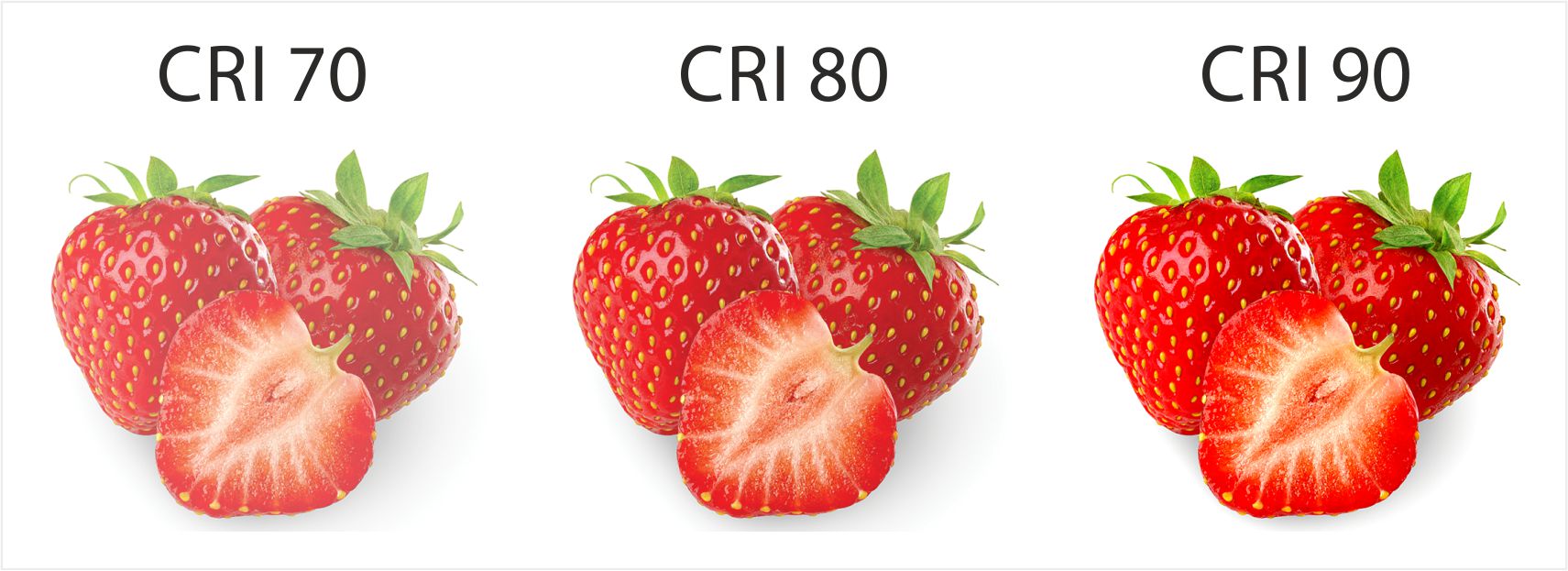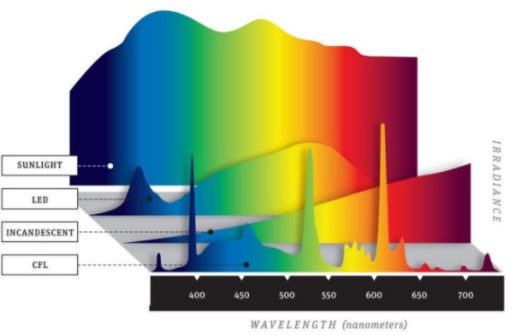-
Your shopping cart is empty!
Color temperature is a way to describe the light appearance provided by a light bulb (lamp). It is measured in degrees of Kelvin (K) on a scale from 1,000 to 10,000.
Typically, commercial and residential lighting application Kelvin temperatures fall somewhere on a scale from 2000K to 6500K. At the lower end of the scale, from 2000K to 3000K, the light produced is called “warm white” and ranges from orange to yellow-white in appearance. Color temperatures between 3100K and 4500K are referred to as “cool white” or “bright white.” Light bulbs (lamps) within this range will emit a more neutral white light and may even have a slightly blue tint. Above 4500K brings us into the “daylight” color temperature of light. Light bulbs (lamps) with color temperatures of 4500K and above will give off a blue-white light that mimics daylight.

A color rendering index (CRI) is a quantitative measure of the ability of a light source to reveal the colors of various objects faithfully in comparison with an ideal or natural light source. Color rendering: Effect of an illuminant on the color appearance of objects by conscious or subconscious comparison with their color appearance under a reference illuminant.


Is an indicative rating for glare based on prescribed set of circumstances in a lit environment. Glare sources within a typical field of vision on the lit environment can be numerous including daylight from windows and the internal lighting. The UGR value is calculated using a complex equation that includes the luminance value of the luminaire, the value of background luminance, the solid angle of the luminaire as seen by the viewer and several other values.
The IP Code, International Protection Marking, IEC standard 60529, sometimes interpreted as Ingress Protection Marking, classifies and rates the degree of protection provided against intrusion.
The first digit indicates the level of protection that the enclosure provides against access to hazardous parts (e.g., electrical conductors, moving parts) and the ingress of solid foreign objects. The second digit indicates the level of protection that the enclosure provides against harmful ingress of water.
| First IP digit meanings | Second IP digit meanings | ||
|---|---|---|---|
| 0 | none | 0 | none |
| 1 | >50 mm | 1 | Dripping water |
| 2 | >12,5 mm | 2 | Dripping water when tilted at 15° |
| 3 | >2,5 mm | 3 | Spraying water |
| 4 | > 1 mm | 4 | Splashing of water |
| 5 | Dust protected | 5 | Water jets |
| 6 | Dust tight | 6 | Powerful water jets |
| 7 | Immersion, up to 1 m depth | ||
| 8 | Immersion, 1 m or more depth | ||
Degrees of protection provided by enclosures for electrical equipment against external mechanical impacts in accordance with IEC 62262:2002 and IEC 60068-2-75:1997.
| RATING | DESCRIPTION |
|---|---|
| IK00 | NOT PROTECTED |
| IK01 | Protected against 0.14 joules impact |
| IK02 | Protected against 0.2 joules impact |
| IK03 | Protected against 0.35 joules impact |
| IK04 | Protected against 0.5 joules impact |
| IK05 | Protected against 0.7 joules impact |
| IK06 | Protected against 1 joule impact |
| IK07 | Protected against 2 joules impact |
| IK08 | Protected against 5 joules impact |
| IK09 | Protected against 10 joules impact |
| IK10 | Protected against 20 joules impact |
|
In the electrical appliance manufacturing industry, the following IEC protection classes are defined in IEC 61140 and used to differentiate between the protective-earth connection requirements of devices. These appliances must have their chassis connected to electrical earth.
|
| CLASS | SYMBOL | DESCRIPTION |
|---|---|---|
| Class I |  |
These appliances must have their chassis connected to electrical earth by a separate earth conductor (coloured green/yellow). |
| Class II |  |
A Class II or double insulated electrical appliance is one which has been designed in such a way that it does not require a safety connection to electrical ground. |
| Class III |  |
A Class III appliance is designed to be supplied from a separated/safety extra-low voltage (SELV) power source. The voltage from a SELV supply is low enough that under normal conditions a person can safely come into contact with it without risk of electrical shock. |
Leave a comment